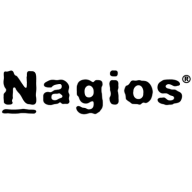

Nagios Log Server and Elastic Observability are key competitors in log management and observability. Elastic Observability appears to have the upper hand due to its extensive features and flexibility, although Nagios Log Server is noted for cost-effectiveness and customer support.
Features: Nagios Log Server is noted for efficient log collection, analysis capabilities, and simpler integrations. Elastic Observability is recognized for comprehensive monitoring features, advanced data visualization, and management of complex environments.
Room for Improvement: Nagios Log Server could improve scalability, real-time data processing, and user interface. Elastic Observability could benefit from a simplified setup process, reduced resource consumption, and enhanced documentation.
Ease of Deployment and Customer Service: Nagios Log Server is acknowledged for straightforward deployment and responsive customer service, fitting smaller IT infrastructures. Elastic Observability requires more intricate deployment for diverse systems, aiming to align customer service with its complexity.
Pricing and ROI: Nagios Log Server is attractive for its lower initial setup cost and promising short-term ROI. Elastic Observability, despite higher upfront costs, is viewed as a long-term investment with substantial ROI for larger enterprises requiring extensive features.


Elastic Observability is primarily used for monitoring login events, application performance, and infrastructure, supporting significant data volumes through features like log aggregation, centralized logging, and system metric analysis.
Elastic Observability employs Elastic APM for performance and latency analysis, significantly aiding business KPIs and technical stability. It is popular among users for system and server monitoring, capacity planning, cyber security, and managing data pipelines. With the integration of Kibana, it offers robust visualization, reporting, and incident response capabilities through rapid log searches while supporting machine learning and hybrid cloud environments.
What are Elastic Observability's key features?Companies in technology, finance, healthcare, and other industries implement Elastic Observability for tailored monitoring solutions. They find its integration with existing systems useful for maintaining operation efficiency and security, particularly valuing the visualization capabilities through Kibana to monitor KPIs and improve incident response times.
Nagios Enterprises delivers official products, services, and solutions for and around Nagios – the industry standard in enterprise-grade IT infrastructure monitoring. With millions of users worldwide, Nagios is the undisputed champion in the IT monitoring space. Our team of dedicated professionals works to ensure total customer satisfaction with all the services we provide. Our extensive network of partners helps extend Nagios services and solutions to new organizations and markets worldwide to meet a variety of business needs. Nagios Enterprises was founded in 2007 by Ethan Galstad. Ethan created what would later become known as Nagios in 1999, and currently serves as the President of Nagios Enterprises.
We monitor all Log Management reviews to prevent fraudulent reviews and keep review quality high. We do not post reviews by company employees or direct competitors. We validate each review for authenticity via cross-reference with LinkedIn, and personal follow-up with the reviewer when necessary.